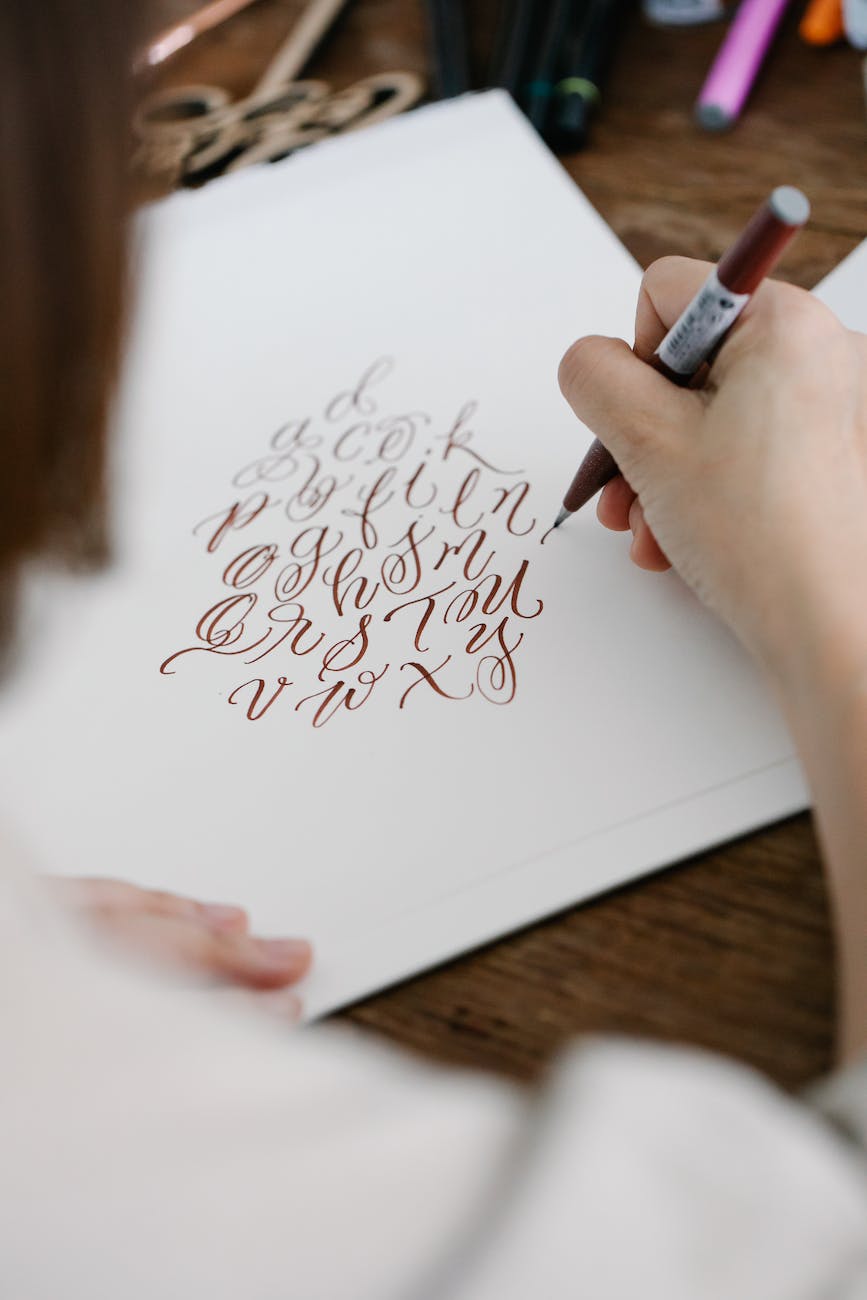calligraphy alphabets: learning and practicing different lettering styles
Calligraphy is the art of creating beautiful and decorative lettering. It is a visual form of expression that combines writing and drawing to create stunning alphabets. Calligraphy has a long and rich history, with roots dating back to ancient civilizations.
The art of calligraphy can be traced back to ancient times, where it was practiced by skilled scribes in various cultures. It was a highly regarded skill, and calligraphers were highly respected for their artistic abilities. Calligraphy was used for important documents, religious texts, and decorative purposes.
Learning calligraphy has many benefits. It enhances creativity, improves fine motor skills, and promotes mindfulness. Calligraphy also helps improve focus and concentration, as it requires precision and attention to detail. Additionally, practicing calligraphy can be a therapeutic and relaxing activity.
How to Get Started with Calligraphy?
Before you begin your calligraphy journey, it’s important to have the right tools. A calligraphy pen, preferably with different nib sizes, is essential for creating different lettering styles. A brush pen can also be used for modern calligraphy. Additionally, a practice pad and calligraphy worksheets can help you get started.
Mastering basic calligraphy strokes is crucial for creating beautiful lettering. These strokes include upward strokes, downward strokes, and diagonal strokes. Practicing these strokes repeatedly will help you develop control and consistency in your lettering.
Working with calligraphy worksheets is a great way to practice and improve your lettering skills. These worksheets provide guidelines and allow you to trace and practice different lettering styles. They are especially helpful for beginners who are just starting their calligraphy journey.
Exploring Different Calligraphy Styles
There are several different calligraphy styles to explore and practice. Copperplate calligraphy is a popular style characterized by its elegant and intricate letterforms. Blackletter calligraphy, also known as Gothic or Old English, has a bold and distinctive appearance. Italic calligraphy is known for its slanted and flowing lettering style.
Tips for Improving Your Calligraphy Skills
Mastering letterforms is essential for improving your calligraphy skills. Understanding the construction of letters and practicing their shapes will help you create consistent and visually appealing lettering. Experimenting with different pens and nib sizes can also enhance your lettering style and provide varying line thickness.
Adding flourishes to your lettering can bring your calligraphy to the next level. Flourishes are decorative elements that can be added to letters or borders to create a unique and artistic look. They can be simple or elaborate, and can be used to personalize your lettering.
Hand Lettering vs Calligraphy: What’s the Difference?
While hand lettering and calligraphy may seem similar, there are distinct differences between the two. Hand lettering focuses on creating visually appealing lettering by drawing each letter individually. It allows for more flexibility in lettering styles and allows artists to create unique fonts.
Calligraphy, on the other hand, follows specific lettering styles and relies on the use of traditional tools such as fountain pens, dip pens, or brush pens. It requires precision and adherence to established lettering styles.
However, hand lettering and calligraphy can be combined to create stunning compositions. By incorporating hand-lettered elements within a calligraphy piece, you can add personal flair and creativity to your work.
